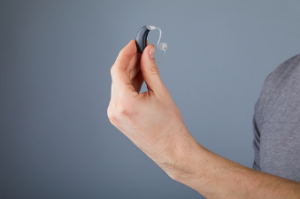Whether you are looking for hearing aids to help you hear in noisy environments or want a solution to your hearing problems, many options are available. Here are a few things to consider when purchasing hearing aids.
Invisible hearing aids to block out good hearing
 Unlike regular hearing aids, invisible hearing aids do not contain any external wires or tubes. Instead, the device is fitted deep inside the ear canal. It is also considered to be more discreet.
Unlike regular hearing aids, invisible hearing aids do not contain any external wires or tubes. Instead, the device is fitted deep inside the ear canal. It is also considered to be more discreet.
The best hearing aids Adelaide are ideal for those with moderate, flattish-type hearing losses. However, they may not be suitable for those with severe, high-frequency hearing loss.
Invisible hearing aids are available in a variety of discreet designs. Some models can be controlled by remote control, while others allow users to adjust settings and volume with an app.
Choosing a product with rechargeable batteries can be a good choice. Some models may also include wireless technology and white noise.
Some models are wireless, while others are plugged into a wire that runs around the neck. If you have reduced dexterity or limited movement, the small size of these hearing aids may cause problems.
Some models are rechargeable, but you may have to change the battery frequently. Depending on the model, you may be able to stream music or TV.
The latest hearing aid to come out of the invisible hearing aid market is the Oticon Opn IIC. This product is the smallest IIC ever created. This device can fit into the ears of 80% of people.
It is also the smallest Bluetooth hearing aid. It makes the product highly discreet, especially if you wear glasses.
Oticon says the IIC can fit into the ears of 8-10 people. It is very impressive, but it is still unknown if the hearing aid will be able to fit into all people’s ears. The company has received early orders for the product, so it will probably fit more people than in the past.
In-the-ear (ITE) hearing aids work well for mild to severe hearing loss
Using an in-the-ear (ITE) hearing aid will help you hear better. There are many different styles to choose from. Your audiologist will help you decide which type of hearing aid best suits your needs.
It would be best to choose a hearing aid that fits your hearing loss, lifestyle, and cosmetic concerns. The hearing aids are designed to improve the volume and quality of your hearing. Hearing aids can also improve your speech comprehension.
You will need to decide if you want a hearing aid that fits completely in the ear or if you would prefer a hearing aid that sits in the ear canal. Choosing a hearing aid that fits in the ear canal can be harder for some people. However, it can also be more convenient.
ITE hearing aids are custom-made based on the shape of your ear. They are designed to fit deeply inside your ear canal. These devices are larger than CIC models and can have longer battery life. Some models are also designed with directional microphones.
ITE hearing aids are usually the largest custom-fit devices. They are also designed to be more discreet than BTE aids. You will not see the hearing aid if you wear glasses.
ITE hearing aids are also easier to handle than CIC models. The earmolds make it easier to handle the devices. ITE devices are also smaller than BTE models, so they can easily fit into a smaller ear. You can also get an ITE hearing aid with a telecoil.
These devices are easier to use, and you may be able to get a device that has manual controls. There are some models with manual volume and memory controls. However, ITE hearing aids can have issues with moisture and earwax.
In-the-canal (RITE) hearing aids are the smallest and least visible
Among the various types of hearing aids, in-the-canal (ITC) devices are the most comfortable and easy to handle. They are also a good choice for mild to severe hearing loss. However, in-the-canal devices may not be effective if you have severe hearing loss.
In-the-canal hearing aids come in two different styles. The first style is the smallest, the mini CIC, and the second is the completely-in-the-canal (CIC). The CIC is the smallest, but it may not have all the features of the larger devices.
In-the-ear (ITE) hearing aids are larger than the CIC, but they are still a good choice for mild to moderate hearing loss. They are usually custom-fitted to fit comfortably within the ear canal. They are available in a wide range of skin tones. In addition, ITE models offer advanced features, such as volume control.
A completely-in-the-canal (CIC) hearing aid is smaller and more discreet. It is moulded to fit inside the ear canal, but it may not be as effective for severe hearing loss. It is also the least visible of the three styles. It may not be suitable for people with dexterity issues. It may also be difficult to handle.